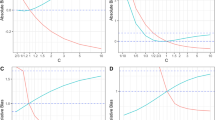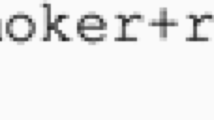Abstract
There is widespread interest in assessing the clinical importance of a study result. This goal is impeded, however, by a lack of clarity about the biological interpretability of epidemiological effect measures, such as the relative risk. A relative risk is often interpreted merely as a measure of some vague statistical association, without a view toward a biological effect as an object of measurement. Not infrequently, if it is not statistically significant, the relative risk estimate is ignored completely.
A key to biological interpretation is appreciating the theoretical framework stipulating that outcome rates derived from 2 comparison groups actually represent measures of different effects in the same population. For instance, by using a placebo group to estimate the number of background cases that occurred in the treatment group, an estimate of the number of excess cases that occurred as a result of treatment can be made. This kind of biological entity can be derived from a relative risk, and can be more easily evaluated as to its clinical importance than a statistical association or a statement about statistical significance. Interpretation then becomes a more directed task, with a focus on the validity of certain ancillary hypotheses upon which biological interpretability rests.
Similar content being viewed by others
References
Rubin DB. Neyman (1923) and causal inference in experiments and observational studies [comment]. Stat Sci 1990; 5: 472–80
Lewis D. Causation. J Philos 1973; 70: 566–7
Rothman KJ. Causes. Am J Epidemiol 1976; 104: 587–92
Rubin DB. Bayesian inference for causal effects: the role of randomization. Ann Stat 1978; 6: 34–58
Holland PW. Statistics and causal inference. Am Stat Assoc 1986; 81: 945–60
Greenland S, Robins JM. Identifiability, exchangeability, and epidemiologic confounding. Int J Epidemiol 1986; 15: 412–8
Rubin DB. Estimating causal effects of treatments in randomized and nonrandomized studies. J Educ Psychol 1974; 66: 688–701
Rothman KJ, Greenland S. Mod Epidemiol, Philadelphia: Lippincott-Raven, 1998: 58–62
Rubin DB. Practical implication of modes of statistical inference for causal effect and the critical role of the assignment mechanism. Biometrics 1991; 47: 1213–34
Popper KR. The logic of scientific discovery. New York: Harper & Roe, 1968. [Originally published as Logik der Forschung. Vienna: Springer, 1934]
Angell M. The interpretation of epidemiologic studies. N Engl J Med 1990; 323: 823–5
Morrison DE, Henkel RE, editors. The significance test controversy. Chicago: Aldine Publishing Company, 1970
Rothman KJ. A show of confidence. N Engl J Med 1978; 299: 1362–3
Salsburg DS. The religion of statistics as practiced in medical journals. Am Stat 1985; 39: 220–3
Rothman KJ. Significance questing. Ann Int Med 1986; 105: 445–7
Simon R. Confidence intervals for reporting results of clinical trials. Ann Intern Med 1986; 105: 429–35
Gardner NJ, Airman DG. Confidence intervals rather than pvalues: estimation rather than hypothesis testing. BMJ 1986; 292: 746–50
Poole C. Beyond the confidence interval. Am J Pub Health 1987; 77: 195–9
Savitz D. Is statistical significance testing useful in interpreting data? Reprod Toxicol 1993; 7: 95–100
Cohen J. The earth is round (p<.05). Am Psychol 1994; 47: 997–1003
Borenstein M. The case for confidence intervals in controlled clinical trials. Control Clin Trials 1994; 15: 411–28
Author information
Authors and Affiliations
Corresponding author
Rights and permissions
About this article
Cite this article
Lanes, S.F. Biological Interpretation of Relative Risk. Drug-Safety 21, 75–79 (1999). https://doi.org/10.2165/00002018-199921020-00001
Published:
Issue Date:
DOI: https://doi.org/10.2165/00002018-199921020-00001




